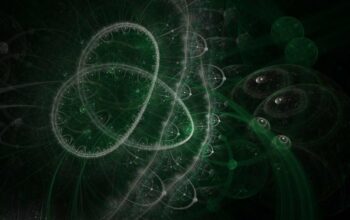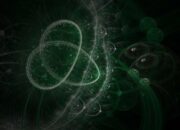In the annals of quantum mechanics, few thought experiments resonate as profoundly as Schrödinger’s Cat. Conceived in 1935 by the luminary physicist Erwin Schrödinger, this scenario remains a focal point of fascination and perplexity, not only within academic circles but also among the general populace. This hypothetical cat, ensconced in a sealed box with a radioactive atom, a Geiger counter, and a vial of poison, serves as a peculiar bridge between the known and the unknown realms of quantum mechanics.
The Construct of Quantum Superposition
At the crux of Schrödinger’s thought experiment lies the principle of quantum superposition. In this peculiar state, the cat exists simultaneously as both alive and dead until an external observation occurs. This conundrum illustrates the defiance of classical physics, where entities possess discernible attributes independent of observation. Quantum mechanics, in its essence, introduces a paradigm wherein reality becomes intrinsically intertwined with the act of measurement, prompting inquiries into the nature of reality itself.
To appreciate the impact of this concept, one must delve into the duality presented by light and matter, where particles exhibit wave-like characteristics. This duality, resolved only upon observation, reflects the inherent uncertainties present in quantum systems. Schrödinger’s Cat epitomizes this principle, thrusting philosophical implications into the ontological discourse surrounding the nature of existence.
The Philosophical Implications
Schrödinger’s Cat transcends mere scientific curiosity; it invokes philosophical inquiries into the nature of consciousness and reality. One must grapple with the unsettling query: does the act of observation alone dictate reality? This leads to a deeper exploration of the observer effect, wherein the measurement alters the state of the quantum system. Herein lies the rub: reality is no longer a passive observer but an active participant in the outcome of quantum phenomena.
The observation of quantum states raises profound ethical considerations, particularly in relation to the observer’s role in the universe. Questions regarding determinism, free will, and the interconnectedness of entities pervade this discourse. If one may influence outcomes by mere observation, the implications for scientific objectivity and the reliability of empirical evidence become paramount.
The Interpretations of Quantum Mechanics
Various interpretations of quantum mechanics have emerged in an attempt to reconcile the paradoxes illustrated by Schrödinger’s Cat. The Copenhagen interpretation espouses the notion that wave functions collapse upon observation, a concept fraught with controversy and philosophical implications. This deterministic view posits a separation between the observer and the observed, albeit with ambiguous boundaries.
Conversely, the many-worlds interpretation posits an infinite continuum of realities, each branching off with every quantum event. In this schema, the cat is both alive and dead, existing in parallel universes where each outcome is realized simultaneously. This interpretation successfully navigates the illogical implications of a singular reality but raises its own ontological dilemmas regarding the nature of existence and the creator’s role in the vast multiverse.
The Role of Quantum entanglement
Delving deeper into the rabbit hole of quantum mechanics, one encounters the phenomenon of quantum entanglement. This intricate relationship allows particles to become intertwined, such that the state of one particle instantaneously influences another, regardless of distance. Entanglement challenges preconceived notions of locality and temporal causality, emphasizing the interconnectedness of particles within the quantum fabric of reality.
The implications of entanglement extend far beyond the confines of a thought experiment. They lay the groundwork for burgeoning technologies, such as quantum computing and quantum cryptography. This intersection of theoretical physics and practical application further serves to intensify public interest and scholarly debate surrounding Schrödinger’s Cat.
The Persisting Allure of Schrödinger’s Cat
Despite its origins over eight decades ago, Schrödinger’s Cat continues to captivate curiosity. Its enduring relevance can be attributed to multiple factors, including its capacity to illustrate complex principles in an accessible manner, its profound philosophical implications, and the myriad interpretations engendered by the quantum mechanism. The conundrum epitomizes the challenges posed by advanced quantum theories while simultaneously inviting interdisciplinary discourse.
As researchers endeavor to unravel the intricacies of quantum mechanics, they invariably confront the philosophical underpinnings that govern our understanding of existence. The dialogue surrounding Schrödinger’s Cat fosters an appreciation for the nuanced complexities inherent in our pursuit of knowledge. As scientists peering into the minutiae of the universe, we are compelled to reconsider the very nature of reality and our role as observers within it.
Conclusion: The Quest for Understanding
Ultimately, Schrödinger’s Cat exists not merely as a perplexing thought experiment but as a profound testament to humanity’s quest for understanding. Its implications extend far beyond the realm of physics; they encompass ethical, philosophical, and existential inquiries that resonate through the tapestry of human contemplation. In the ever-evolving landscape of quantum physics, Schrödinger’s Cat continues to serve as both a grotesque riddle and a beacon of exploration—a notorious reminder that the mysteries of the universe often elude definitive explanation. Despite its unsettling nature, this feline enigma remains a quintessential figure in the exploration of the fundamental principles that govern the cosmos.






